August-September 2022
The Colors of Newfoundland
We wander from west to east and back again across this wonderful land
Well, we succeeded! We’ve outlasted the little guys — the bugs of course. Returning to Newfoundland for a second visit — the first being way back in 2004 — we applied the same strategy that had worked well for us then and by golly it worked again now. We delayed our arrival until almost mid-August and had little trouble from the small pests. Their season had ended and ours could begin without the swarms. So, unlike visiting Labrador, no whining about bug problems for you to listen to this time.
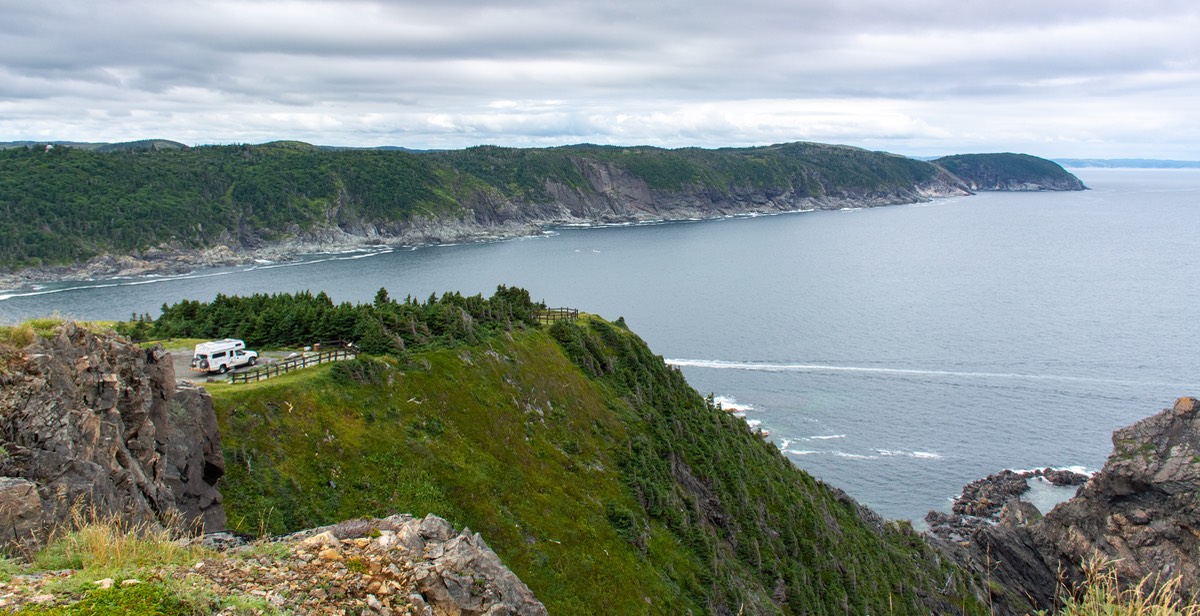
In fact, no complaints at all. Newfoundland remains much the same as when we left eighteen years ago; mostly a quiet and restful place to wander. A land of contrasts to be sure, but one of continuity even more. Fog or sun, inland forest or coastal rocks and surf, small villages or medium sized towns — Newfoundland is the kind of place where you find yourself thinking, ‘I could be happy living here’; quickly followed by, ‘I wonder how bad the winters really are.’ It seems a comfortable place, with a sense of itself; and it is endlessly beautiful.
We like the coasts the best. The seemingly endless craggy coast. If you check a map you’ll see that Newfoundland is an island that is sort of in the shape of a hand, a main center mass with fingers jutting out from it, some long and some stubby, but each one a peninsula marked with bays and inlets galore. The result is a long and scenic coastline of protected harbors — actually Newfoundland has nearly 11,000 miles of coastline. Given NFL’s history as a prime base for fishing it is no surprise that the coast is dotted with villages where folks settled in order to earn their living from the sea.

Many of these villages remain unchanged today, some in a slightly shabby, workaday sort of condition, but most showing a colorful, cheerful face to the world; they are neat and clean, with white or brightly painted houses contrasting with the darker colors of the land and the sea. The overall scene when you come around a bend in the road and see one of these communities spread along the waterfront is simply charming.
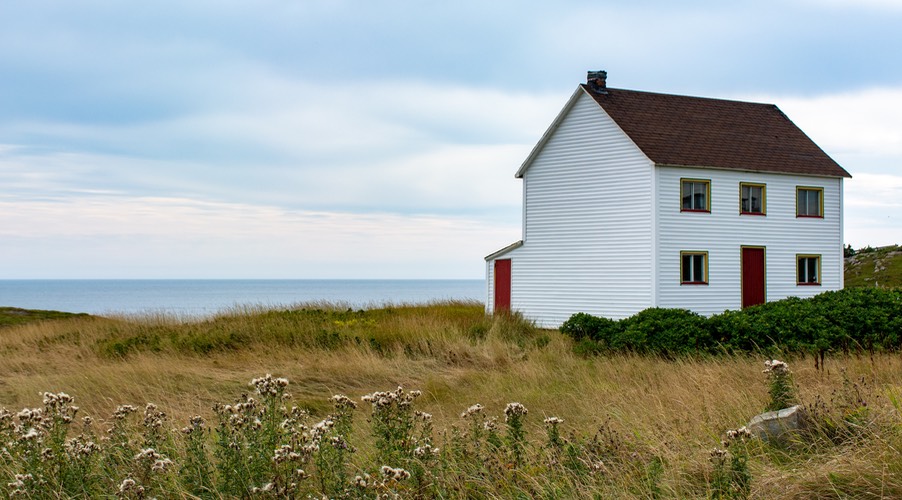
We explored most of those peninsulas as we made our way around the island. Some have become more touristy while others remain less changed. Certainly there is tourism in Newfoundland, but not so much as to be a main driver in the economy in most areas. Kathy was talking to a man who owned the laundromat we were using and he said that Newfoundland might take in the same amount of tourist income in an entire season that Prince Edward Island does on a good weekend. No doubt in some parts of the province there is more impact from tourism than that would indicate, but overall it sounds about right to us.
The result is that most Newfoundlanders do not make their living from the Others who come to visit, but from the ongoing life of their own community and the province as a whole. The summer season is short, and outside of St John’s and select highlights around the island, the travelers are few.
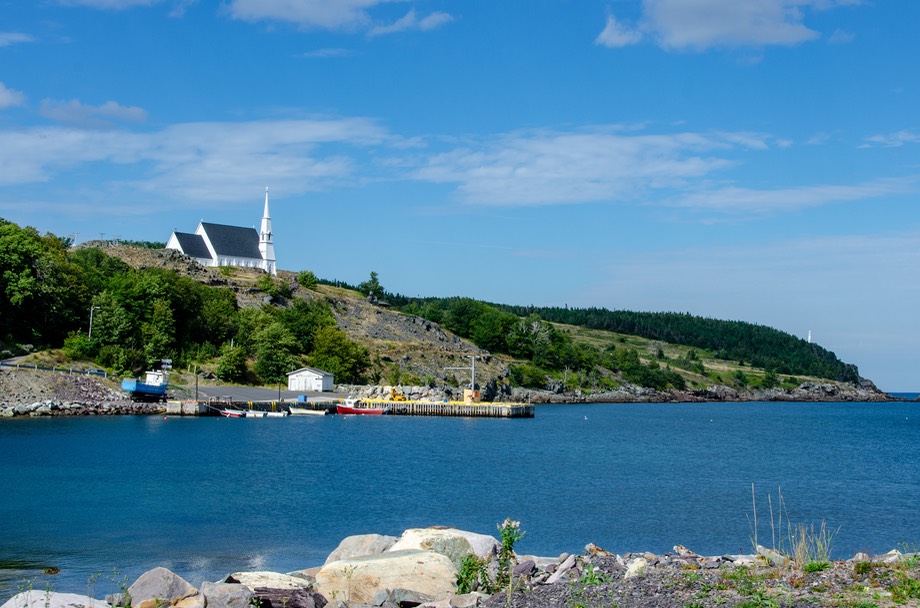
So what did we do? Our main goal for the summer was simply to spend a month or so of leisurely time here. We set neither an arrival date nor a departure deadline. It was meant to be a rambling journey, following our noses and instincts up and down peninsulas, parking beside rivers and lakes and bits of ocean as we saw fit, learning more about this strange place most famous its connection to the Titanic, but also for having produced Joey Smallwood (more on him later). Oh, and there were supposed to be moose — lots of moose. Yeah, well…
One or two basics first. Newfoundland is actually an island that is joined at the hip — in a governmental sense — with Labrador; together they constitute the single Province of Newfoundland & Labrador, with the accent in each word being on the last syllable. The provincial capital is St John’s, on the eastern side of Newfoundland. Obviously, you cannot drive directly here. You either fly in, come on a cruise ship, or take a ferry. There are two ferries that cross the waters from Sydney, Nova Scotia, landing at either end of the island. The other arrival point is by crossing the Straits of Belle Isle, which divide Newfoundland’s western edge from its other half, Labrador, and which is how we arrived this year. We will depart on the ferry from Port Aux Basque, on the southwest corner of Newfoundland, in order to return to the mainland.
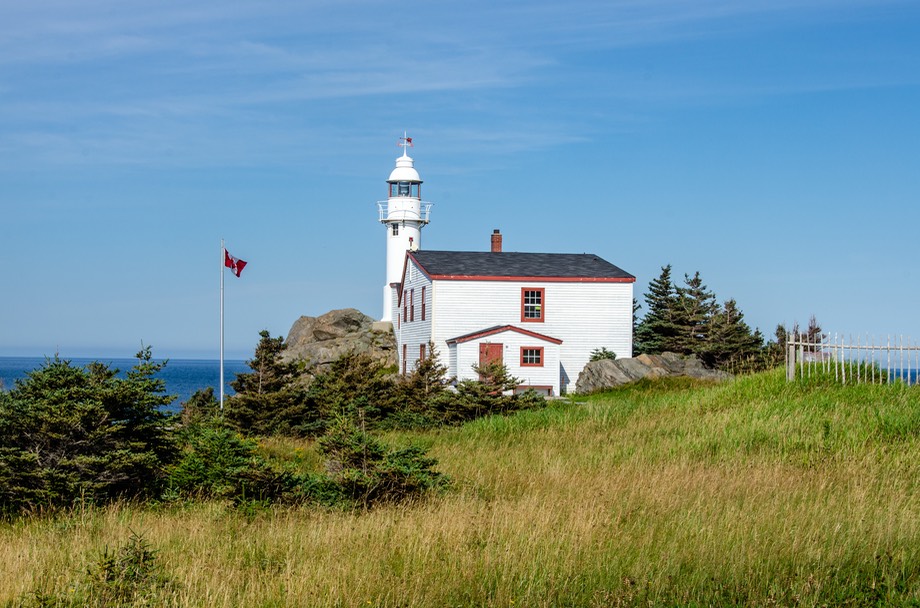
So onward. We had lots of ground to cover. Our plan was to move north along the western side of the island, and then head east across the middle, detouring up into various arms of the bays, inlets, mountain ranges and islands that surround the edges of Newfoundland. Then once we’d arrived in the far, far southeastern end of things, we’d turn around and return west. Wait, you might say; starting from the west side, as we did, and given that there is only one highway crossing the island from west to east and back, wouldn’t it make some sense to take the ferry to Nova Scotia from the east side?? Well, yes it sort of does, but naturally we didn’t do that. We chose to drive back west to take the much shorter ferry from Port Aux Basque. The east side ferry, which lands at Argentia, takes nearly three times as long and the seas can be rough. You’d want to book a cabin because it’s a seventeen hour trip, and then all the meals… so it works out to be a fair amount more expensive even after factoring the cost of fuel to make the 500 mile drive back to PAB. Ultimately we are drivers, not passengers, so, as we had done on our earlier visit, we would take the shorter ferry back.
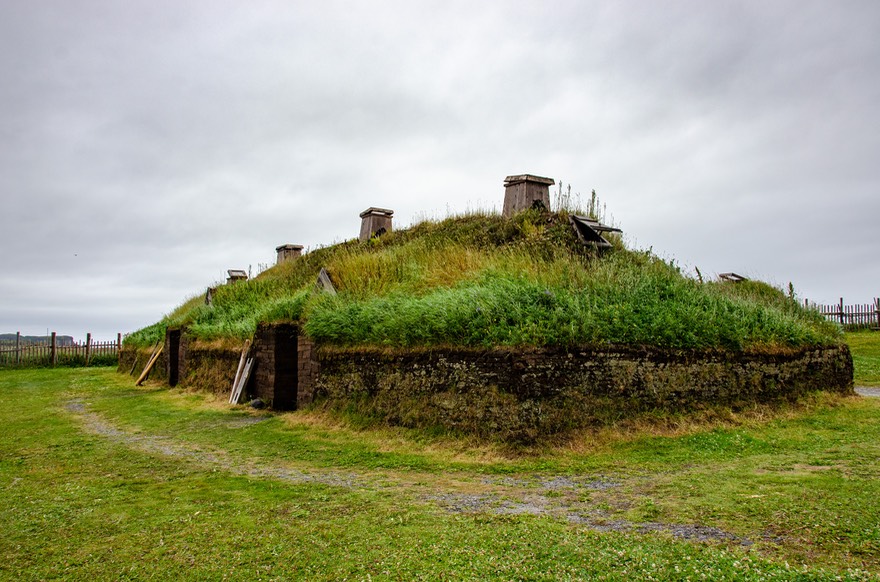
Our first destination was L’Anse aux Meadows. This is the amazing and lovely area where the Vikings first landed in North America at about 1000 AD. There is a really great Interpretive Center here, and you go out and stand in the middle of the area where the Vikings actually dug and built homes, establishing themselves. They used this location as a base camp for explorative journeys further south along the coast, and lived here for several years. There are artifacts, walks to take, reconstructed sod buildings, lots of explanations of their history, etc. It is such a great spot. It rained much of the morning; very atmospheric!
And, while there, we saw our first moose of the year. He was on the Heritage Site grounds, munching his way through the day. Could have cared less that all off us found him quite exciting and ran around taking 17 photos per second like paparazzi. It was really great. Driving back south a day or two later we saw our second, and sadly last moose, a female this time who was also munching alongside the highway. We slowed right down to give her plenty of space and finally stopped to snap a few photos. It was grand. The moose really are here; in fact, as we waited for our ferry in September we learned that moose hunting season has recently begun. Guess the hunters know where to look.
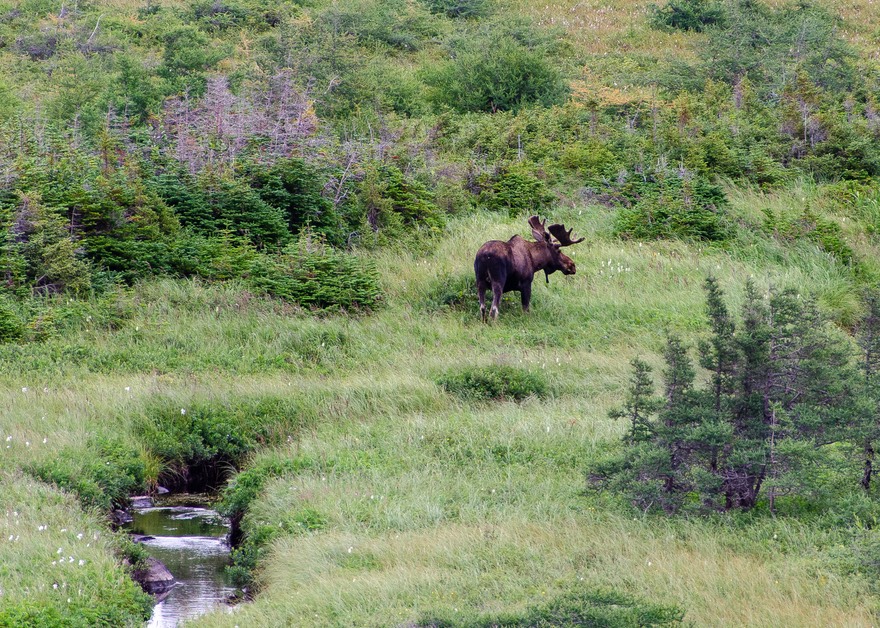
Heading south, we wandered on to the tiny community of Dark Tickle, where we bought some partridge berry jam for us (aka lingonberry) and an “I ❤️ NL” sticker for La Tortuga. The jam is really yummy stuff. We spent the night near the little community of Nameless Cove; it’s very close to Flowers Cove, of course. We drove out past two graveyards and a beached boat, then alongside a storage area for fishing floats and stuff, out to the point on the water, across the way from a lighthouse. It was a grand place. Stormed much of the night and morning, so we decided to stay the day, listening to the foghorn for much of it. It was wonderful, quiet, and peaceful. We really like being beside the water, and Kathy has a thing for foghorns.
Our next stop was at Port au Choix National Heritage Site. The explanatory films were shut down still due to Covid restrictions, but there was good info, nice little artifacts, and displays of the shelters of the local Dorset Paleoeskimoes. Plenty of walking trails to the different sites, but it was raining really hard so we skipped these. A nice lighthouse sits there as well, at Riche Point.
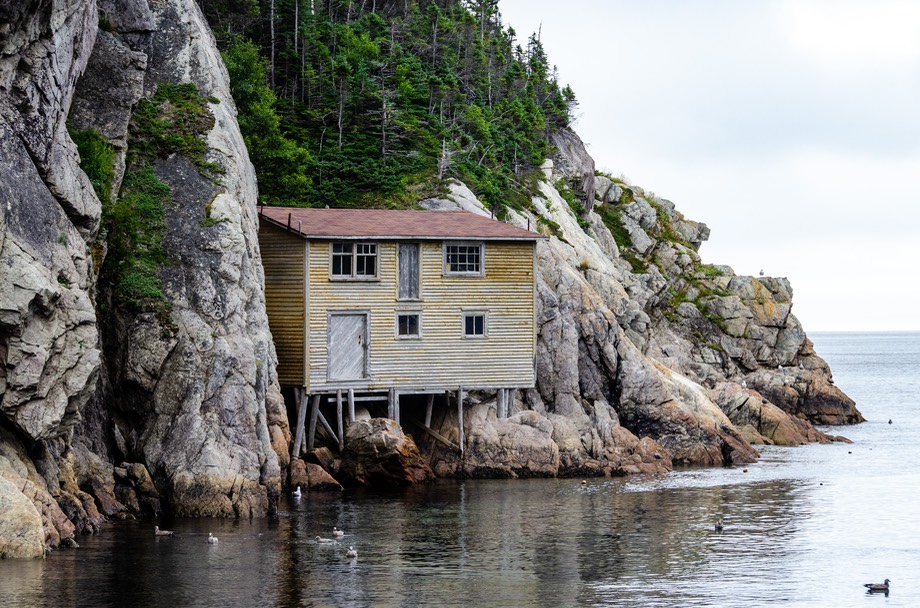
In addition to L’Anse aux Meadows, the other biggie in western Newfoundland is the large and beautiful Gros Morne National Park. This place is huge and has little in the way of road access; like many other parks, the emphasis here is on hiking. We were looking for the information center we remembered from our earlier visit, but were having a hard time. Couldn’t track it down. Signage was quite limited, which is endemic here in eastern Canada; the GPS was no help at all (Garmin is not up to speed in this region), and the maps we had were also not really first rate. So we had insufficient information, as usual. We passed one sign for a visitor’s center, but it went into the town of Rocky Harbor and did not give any specifics. We assumed that meant it was local info, for that community. It turns out we should have stopped; it was now the temporary park entrance information center. It seems the “real” one is being rebuilt. Our mistake.
We finally found the informational heritage center, where it had been 18 years ago. But, while on our previous visit we had been so impressed with all the material available, it has now been redone with an entirely different focus — on hiking and biking and children’s exhibits — all worthwhile, but the focus is no longer on the incredible geological situation here in this part of the world.
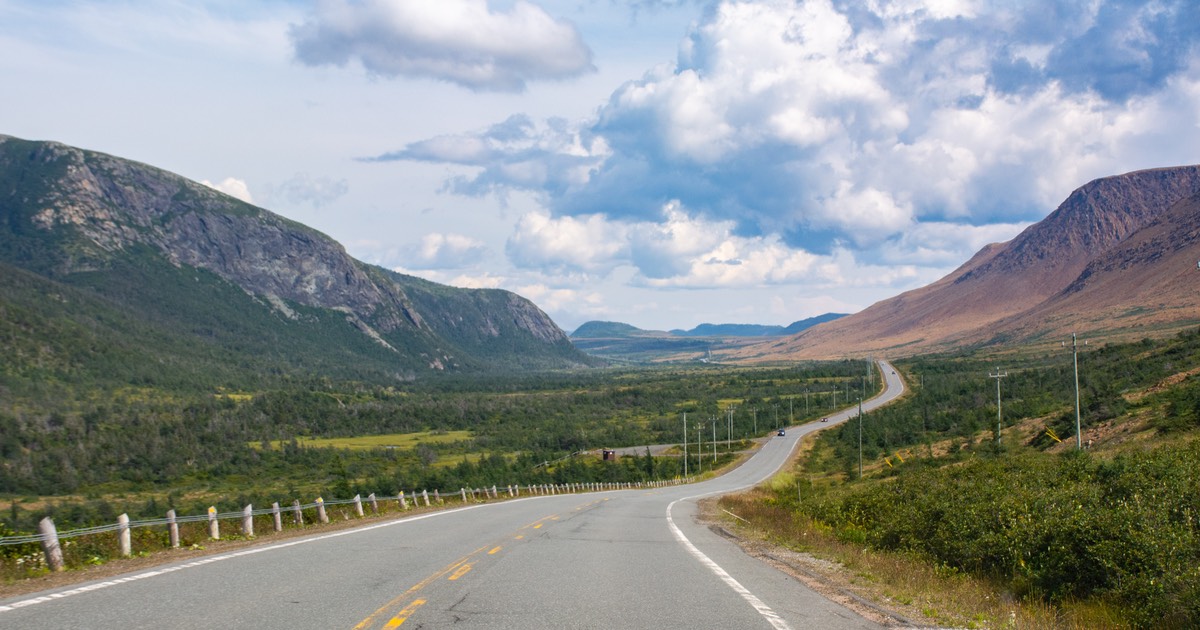
We were bummed and disappointed by the change. The important takeaway we’d had before was the incredible evidence of the melding of three separate tectonic plates that came together to form this amazing island; at the time it was truly mind-expanding stuff to us. In the picture here you can see the different coloration of the rocks and the absence of vegetation that mark the difference between two plates from completely different parts of the earth’s crust coming together. Amazing! Now there are pretty displays about various aspects of the geology and a long film about the scientist who used Gros Morne to prove the theory of plate tectonics, but it somehow lacks the impact it had before of what it all meant. As we said, disappointing; in our minds it represents a sort of dumbing down of the visitor center experience. Ah, well, did they think to ask us? Uh, no. One good thing in this building was a display of indigenous photography, which was excellent and really interesting.
But hey, it was a lovely day and we thoroughly enjoyed the wandering in the park. We drove a side road over to Trout River. It is a great drive, passing through several different geological areas that are so very different from each other. Lovely.
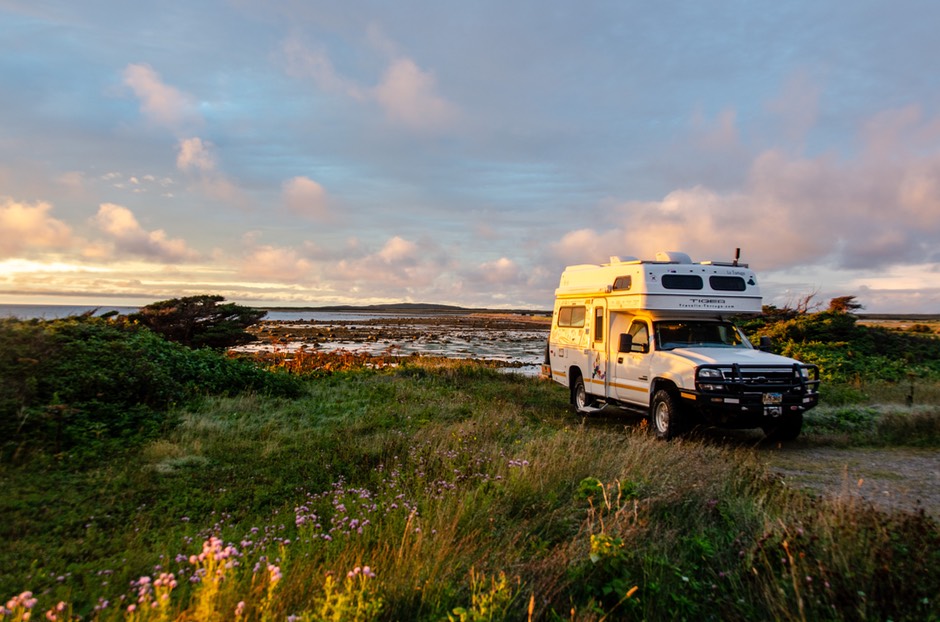
In Trout River we wanted to poke around, but the road through the little community was in the middle of a complete re-do, and was a thorough mess!!! We managed to slowly and gently wend our way, keeping out of the way of the paving contractors. We stopped at Barney’s Grocery and Ice Cream Store for some of the best soft serve cones we’ve ever had. Worth every step of the way despite the accompanying smell of hot tar. Chatted with a man holding the Slow/Stop sign controlling traffic through the work zone; he had left a good job in finance in St John’s to move his family out west to live in a small coastal town, and was very happy with the decision.
After leaving Trout River we were rewarded by one of our prettiest camping spots of the summer. A bit north of Wiltondale, if you know the area, just off Road 431, we parked down on the beach beside the lake there. Beautiful spot in a splendid location; there was a lovely display of lily pads spread out over the lake.
Autumn is approaching; we are starting to see tiny bits of fall color on the occasional leaf, and more and more berries are ripening on the bushes. This results in increasing numbers of cars stopped by the road while their owners are out picking berries. Amazingly, we continue to see the wonderful roadside display of wildflowers we’ve been enjoying ever since entering Canada in June. These flowers in all their pinks, yellows, purples, blues and whites make the most of their opportunities during the short season they are allowed, and were just beginning to fade as we made our eventual way towards the ferry in mid-September.
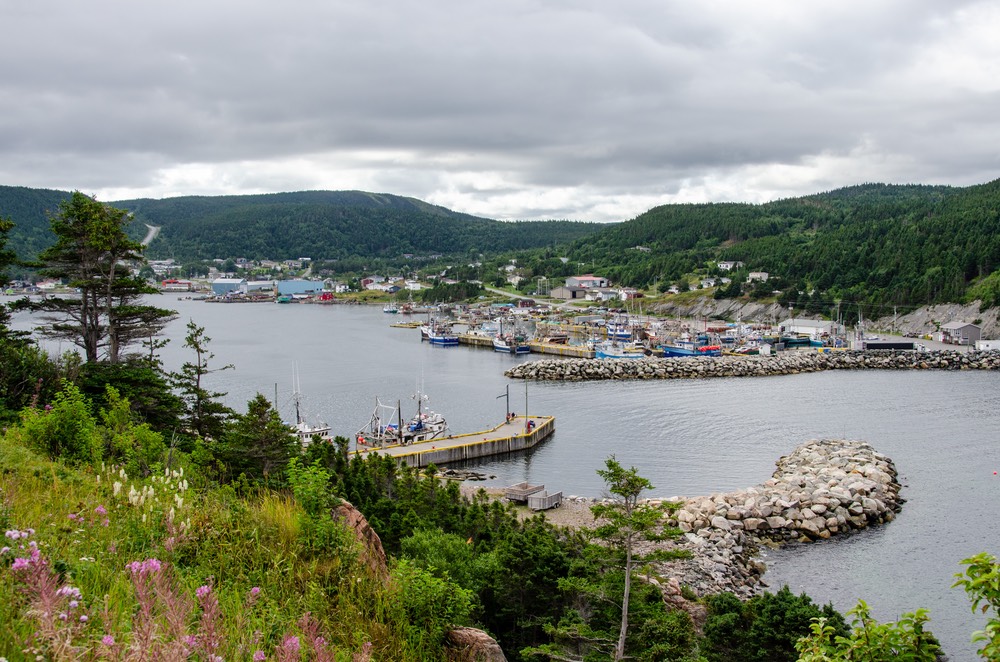
After doing a bit of shopping in Deer Lake, at the recommendation of our friend, Sylvie we made sure to travel up into the Baie Verte Peninsula. We spent a couple of quiet wandering, mostly foggy days, then headed for our target up here, the beautiful town of La Scie. Wow — what a great place. There had been a fair amount of rain in the area recently; it was overcast but warm during our stay. La Scie is very special. There is a road to the top of the bluff on the edge of town, above the bay and looking out onto the ocean. You can hike up most of it, then finally reach a point where you take stairs to the very top. Such a view! Lots of ocean out there. You are climbing up among berries, ripe and not yet; moss and lichen galore, and a few late roses. Lovely colors and lush greenery. Terrific. We stopped for goodies at the local bakery, and left with the most amazing brownies; one was Skor Chocolate Caramel, and the other just plain (but fantastic) chocolate!
East from La Scie we continued right out to the end of the peninsula. We were driving through areas full of potholes… and then coming to signs saying ‘Caution Potholes Ahead’, a not uncommon situation in rural NFL. Along the way we saw lots of lovely stunted birches; it was a great drive. We were heading to Shoe Cove, a pretty little nothing of a place we knew about thanks to the very nice woman at the visitor’s center back in Deer Lake. Down at the tiny harbor is a fish shed built right into the rocks that was interesting. There were five guys standing watching a boat that had just been hauled out of the bay and was draining its water. Seemed to be the day’s entertainment.
Heading back down to the highway (TCH = Trans Canada Highway) we stopped for the night in a quarry that gets our vote for Best Quarry Ever. It is a huge, abandoned area teeming with wildflowers. It was quite lovely, and a lake was visible in the far distance. A beautiful spot, it reminded us of the Butchart Gardens out on Vancouver Island, near Victoria, Canada. That re-purposed rock quarry was carefully planted, of course, and this one was filled with (just) wildflowers, but every bit as lovely.
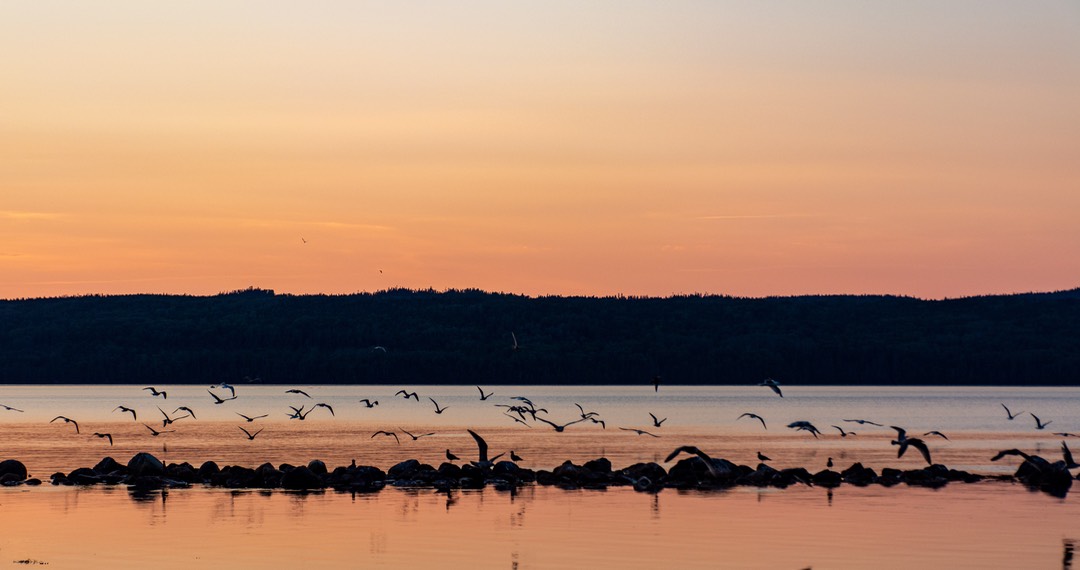
Our next target was Robert’s Arm and Triton, at the base of the next peninsula. We stopped and entertained the seagulls in South Brook (or were they entertaining us?), while we all waited for the lovely sunset; we drove out the next morning on the beautiful road to Triton. By now we were looking for raspberry jam; the raspberries are grown in this area, along with blueberries and others. We found a house with a sign, but their berries had all been picked , and shipped off to a jam-making place. Kathy chatted with the very nice man who came out to see what we needed. He suggested a couple of towns to check out — Lewisporte and Campbellton — we would be going through them later on, so that was good information.
We continued on out to Triton, and found this to be another charming drive, with little fishing villages along the way, generally clean and brightly painted. We saw very few ramshackle properties and noticed there was lots of new, larger housing going in. This area is not all that far away from Twillingate, a major tourist area here in Newfoundland, and seems to be growing fast. Along the way, in Robert’s Arm, Kathy posed for photos with the local version of the Loch Ness monster. Never a dull moment.
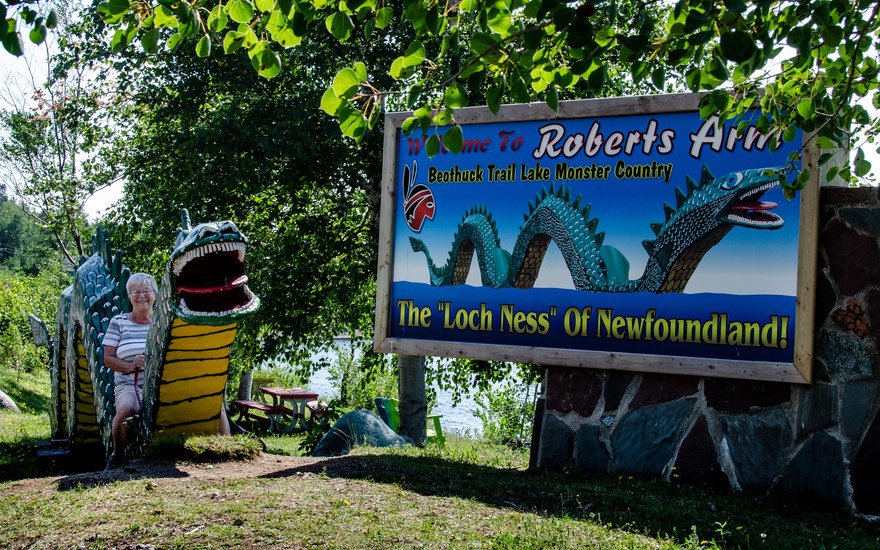
Back from Triton and South Brook, we returned to the main highway, and drove south to Grand Falls-Windsor, the largest city in the center of Newfoundland, where we found another jewel of a place to hang out for a couple of days. Not only do they have a splendid library, but there was a pretty spot south of town, a grassy municipal park with a close-up view of the huge Exploits River. We were told it would be fine for us to stay the night, and so we did. Good choice. We were having really great, sunny days and cool nights; Newfoundland at its best.
We spent the next morning at the library in town getting caught up with emails and sending out our Labrador message, then packed up and moved further east, heading for Botwood and its famous murals. We are having to scramble for wifi much of the time here in eastern Canada, and have been renewing our acquaintance with local library systems, much as we had done for the first many years we were on the road.
Botwood is one cool town, highly recommended if you’re in the area. The town goes back a very long ways, and twenty or so years ago they decided that a good way to share their history and possibly attract some tourism was to create huge murals which were painted on the sides of appropriate buildings. The murals are truly amazing. They’ve been painted by different artists and are quite extraordinary. A few years back Botwood hosted the annual get together of international mural artists and gained quite a bit of acclaim for itself.
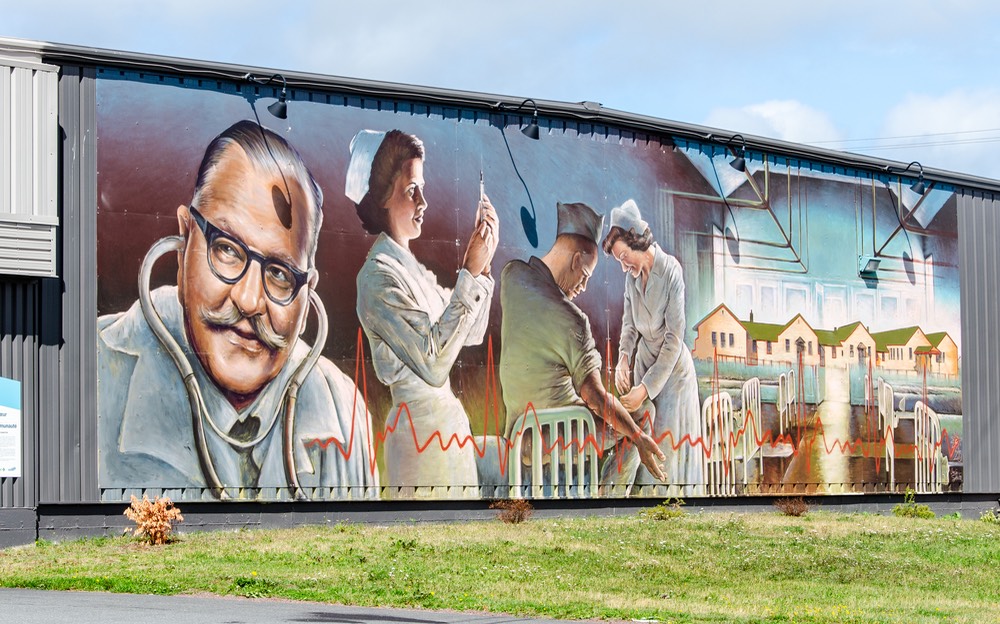
Rick had a chance to have a good chat with a couple of locals. Two guys, brothers, were putting finishing touches on installing one of the murals. This particular one wasn’t painted on site but had been done in the artist’s studio in France, then shipped over to be laid in place. The men explained the process and it was quite involved. The artist had flown in for the recent official unveiling of the mural, and the men were doing finishing touches around the edges. As we were all standing around, two sisters who were originally from New Guinea wandered through to join the discussion. Friendly locals. And we bought our first local raspberry jam at the tiny museum there! A great visit and a real highlight of our summer.
And yes, at an open market near Lewisporte, we found more raspberry jam. Yummy! Now well supplied, we drove on through Carmanville, and right out on to their wharf, where we spent the night, right out over the water. It was super, with a gorgeous soft pink sunset. Increasingly, we are remarking on the clarity of the air here in Newfoundland; it is so great and the sunlight does wonderful things to the colors all around us — there seems to be no air pollution at all! Or maybe we’re just closer to the sky.
Leaving the Carmanville area we circled on up around the top of this peninsula, through Musgrave Harbor, and then started down the east side, entering one of the prettiest and least developed areas we have driven through so far. This is the area near Deadman’s Bay. Wow! We were delighted to spend some time here.
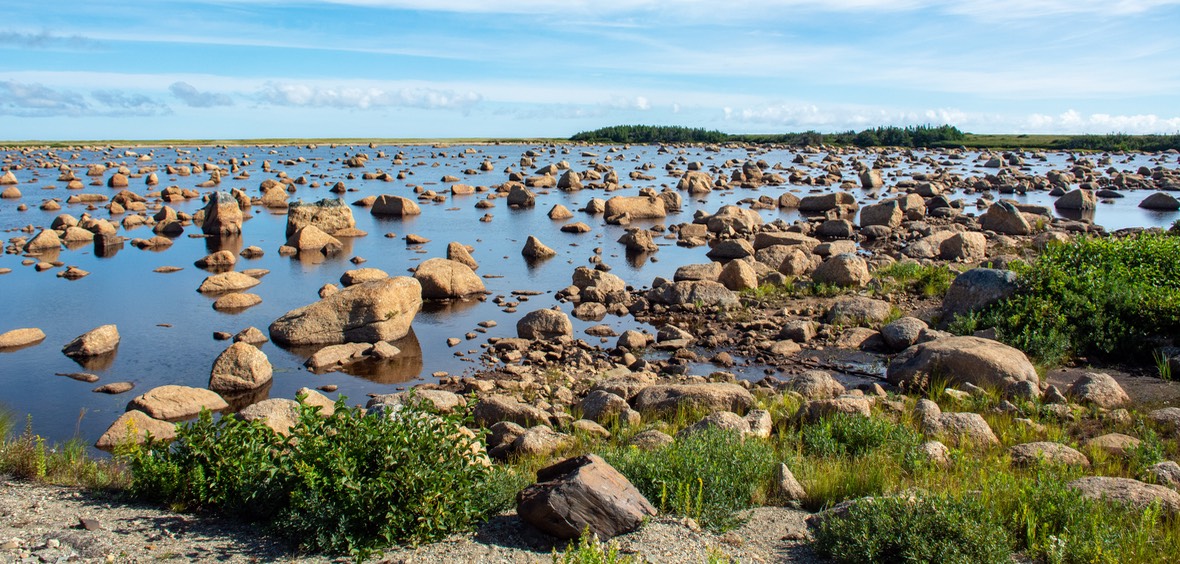
We parked on a bluff overlooking the bay… and out into the Atlantic. Quiet, remote, with a few locals’ trailers parked nearby enjoying the summertime weather. Some of them looked rather permanent, with small vegetable gardens beside them, and satellite dishes on their roofs. We talked to one couple; very inviting and happy to have us nearby. We spent a few days in the area, enjoying the solitude and views off to the east. There were several rivers coming down from the hills further inland and running straight out into the bay. The multitude of rocks we were seeing in the rivers we think are from glaciation. These are bays that end up in the ocean, and as the glaciers retreated they left the rocks behind. Quite cool and lovely. This area reminds us of Scotland and Iceland.
Still on this coastline, we found yet another treasure. A little south of the town of Templeman, we turned off east a little ways to the village of Newtown. Newtown is a charmer, an awesome old village poking out into the waters of its bay, with bridges and canals connecting the various tiny streets and quiet little spots. Two country churches to explore. And within this community is the Barbour Living Heritage Village, sharing the history of the area; you can tour with a guide if you like. The area is quiet, you can walk around and talk to people out strolling on a Saturday morning, mowing lawns and working in their gardens. We talked to a couple from Toronto who have a small house here for the summer. Good choice.
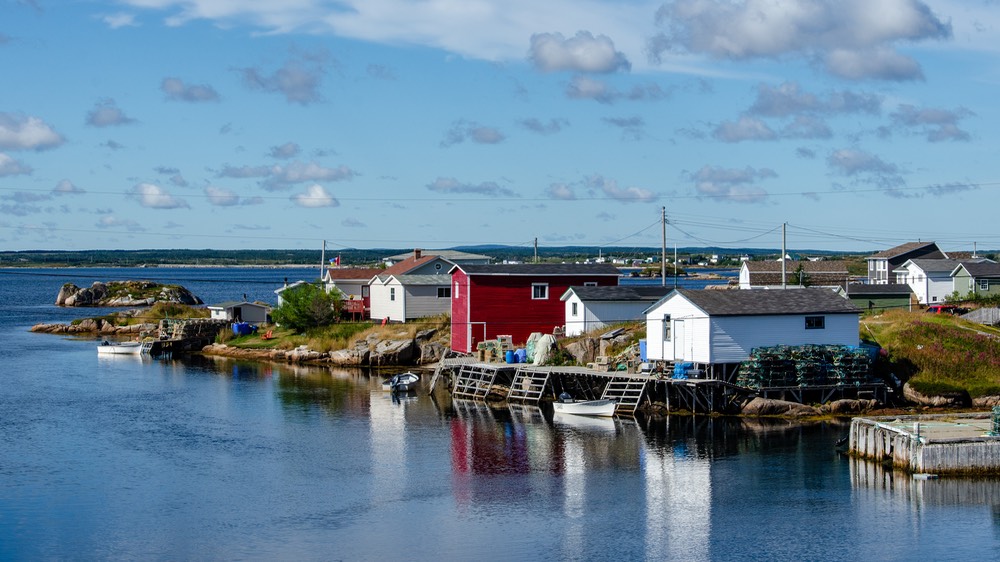
Reluctantly, we left this special coastline and moved on to the town of Gambo. So why stop there? Well, there’s a small museum dedicated in part to Joey Smallwood, a man from St John’s, a politician who had been very important in persuading Newfoundland to join the Confederation in 1949 and become a province of Canada. His is a very interesting story; we had both read a book about him the last time we had been here, in 2004. It was called “The Colony of Unrequited Dreams” and had given us lots of information about his life. Kathy wanted to find out more, but unfortunately, the museum seemed to have little information about him and was in rather rough shape; not too surprising, as he had really fallen out of favor later in his career. We didn’t stay long; but I did take a picture of a statue erected in his honor in the nearby municipal park.
We are now moving south into a more agricultural part of the province, and there are signs along the road talking about vegetable hampers being for sale — selling turnips and beets. It’s almost Labor Day (Canada celebrates on the same day as America), which is a big holiday, we can assure you. And you have a sense that the end of summer is approaching.
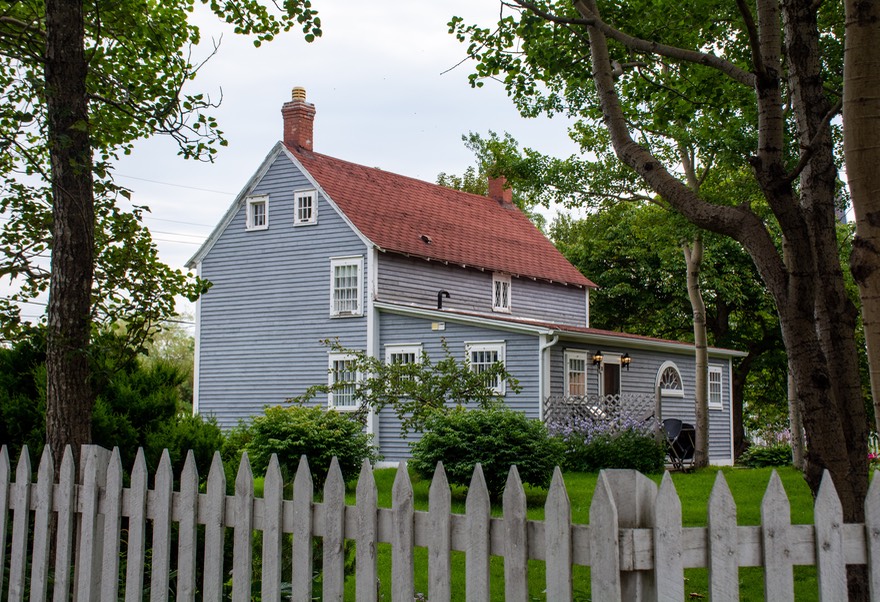
We had now come to Terra Nova NP. As is true with much of the tourist-directed activities up here, Terra Nova features hiking and biking trails and back-country experiences for visitors, while working to regenerate the natural flora and fauna. We’re a bit beyond most of the outdoorsy part now, but it’s a rugged, lovely area with great geology and good nighttime sky watching; another example of the clear air up here. We enjoyed the visitor’s centre, which had good displays and films. Found out that regardless of the fact that we weren’t seeing lots of them, moose are really a problem in this part of the country. They are prolific, eat a tremendous amount of foliage, do lots of damage to the trees (especially the bark), and as it turns out, are not even native to Newfoundland at all. So what to do? No good answers, but moose season is now starting and hunters are out there.
An interesting little story here is that we had nice chat with one of the Park Rangers. Actually the people living here in Newfoundland are really interested in the Tiger and we have frequent chats with them as they come around to see the stickers and ask us about our travels.
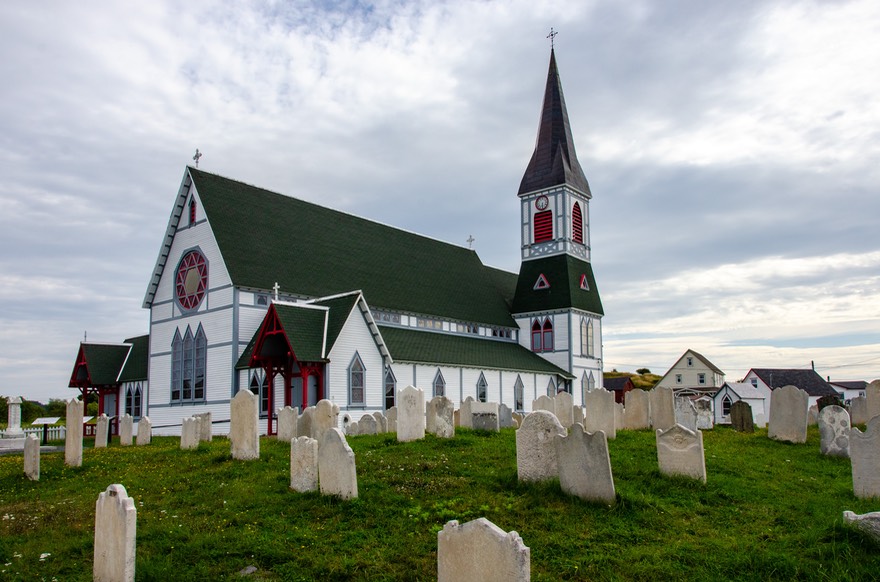
We had a very nice talk with Chris, the Ranger, but what makes this into a story is that nearly a week later, when we were out on another peninsula, enjoying a beautiful seaside location for the day, a truck pulls in and sure enough it’s Chris and his wife Angie. Turns out they have a cabin further out this road and were on the way out for a stay when he spotted the Tiger. He’d been telling Angie all about us and here we were. Really friendly folks. We had a great chat… and speaking of moose, he had a really wild story to tell.
After checking out Tiger’s bull bar (the big bumper on the front) he pointed to his truck, which had something similar. He said he’d added the bumper to this truck after his old truck had been totaled by an impact with a moose. Now moose are really, really, really big. Hitting a deer can do a lot of damage to a car, but this moose totally destroyed this big heavy duty pickup. What makes the story especially scary was that he hit the moose on the right front corner of the truck and the moose was spun around such that its head smashed right through the passenger side window on the back door of this full size club-cab truck. The passenger in that seat suffered a concussion from literally head butting the moose. Ouch!
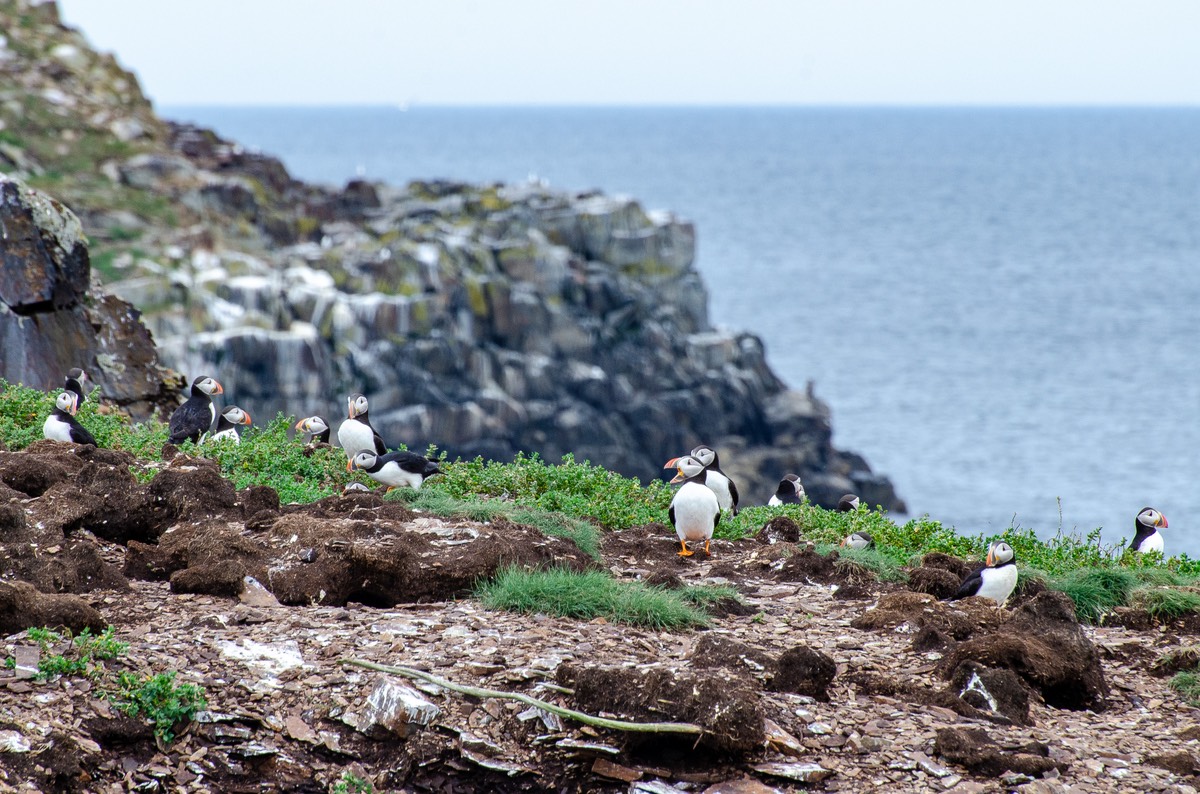
After leaving the Terra Nova area, we turned east out onto the Bonavista Peninsula — which quickly became another favorite area. We did a circle trip, starting in Trinity, a tiny and very well known village with two splendid churches sparkling in the sunshine; then up through Elliston to see the puffins. Locals were commenting that we were quite fortunate — the puffins usually had flown off to warmer climates by now, but it had a been a warm summer so they were still around to be enjoyed. They were really cool, although far enough away that you needed binoculars to get a good look. Puffins are marvelous, by the way. Cute and puffin-y. Photo opportunities were limited by the distance, but still pretty cute.
Then we went on out to the lighthouse at Cape Bonavista. We have a thing about lighthouses, in case you hadn’t noticed; and Newfoundland is lighthouse heaven. One could say that they’re all variations on the same theme. Yeah, well duh. But each is significant, has a real reason for its existence, and out here as part of the various peninsulas, each has a real presence. They flash at you; they make noise; and — well, I’ll just go ahead and say it — I love foghorns! Rick just smiles (he always smiles at me); but we both grew up along the California coastline, and know how important that noise is in bad weather. So, yeah, we think they’re pretty cool. But no, we’d never want to live in one. So relax.
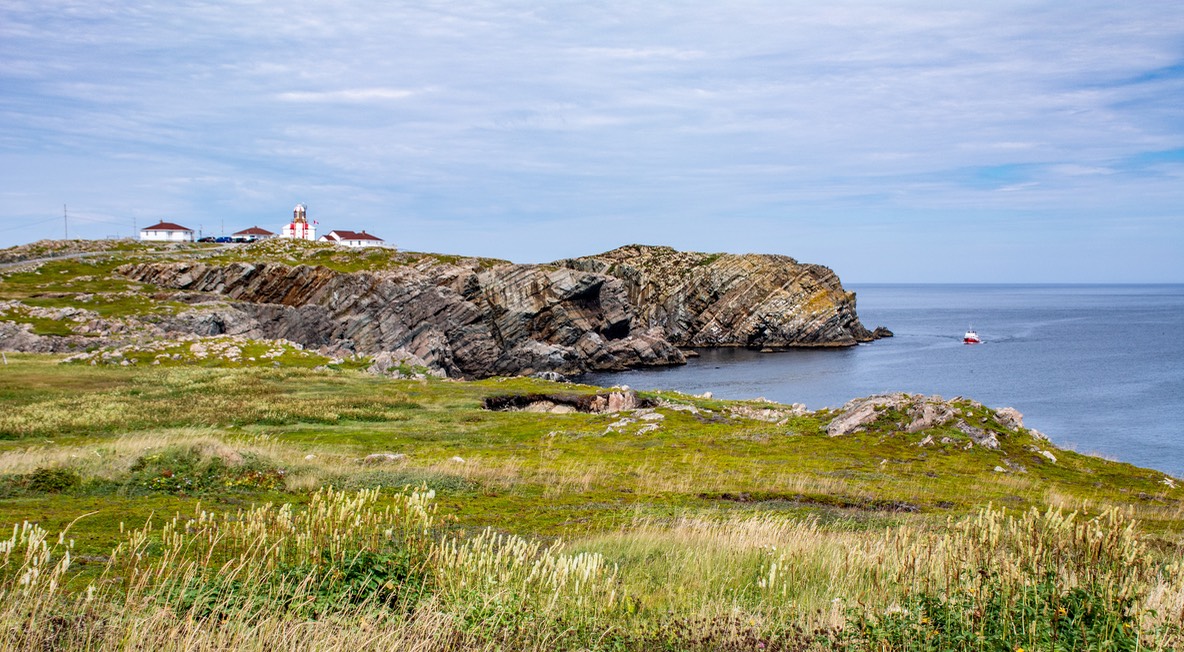
But enough of all that. Cape Bonavista is a lovely spot at the top of a beautiful peninsula and it has a cool statue of our old friend John Cabot, aka Giovanni Caboto. Leaving, we wandered back down on the west side of things, through the town of Bonavista, and ended up in King’s Cove, a nice little town where we hung out for a bit while we started organizing the eastern half of our trip up here. We had a couple of places we still wanted to see out here in the northeastern area, so we headed for them. Along the way we started seeing roads that were badly in needed of repair, but making do with white circles drawn around the worst of the potholes (you’d think it would almost be easier to just resurface the road, wouldn’t you!).
Heart’s Content — no, not Heart’s Delight, or Heart’s Desire, two nearby towns — was the first stop we made. It was the home of the Cable Station Historic Museum. Now that was a great experience! This place is amazing. The first successful undersea transatlantic telegraph cable was strung from here to Ireland in the 1860’s — it took about six attempts to finally get it to work. As a result, the small village of Heart’s Content, Newfoundland became the communications hub for all of the Americas; it grew to about 300 people working at the center until improving technology began to reduce the size of the workforce.
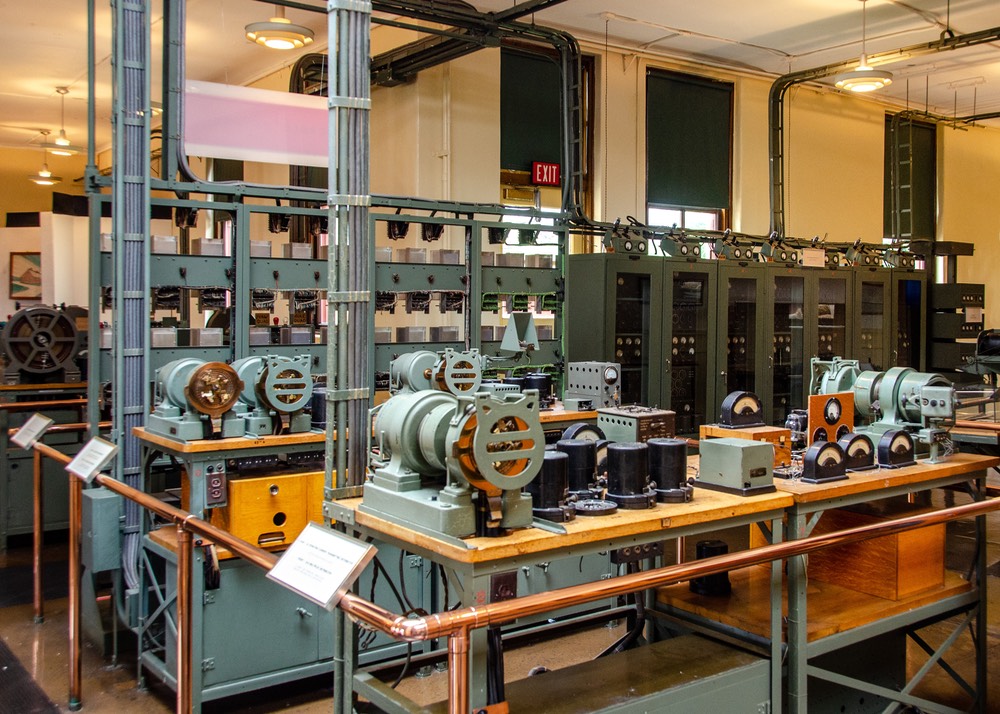
Most amazingly of all — well maybe — is that this remained the hub of all transatlantic communications for NINETY YEARS, until the mid-1950’s, when transatlantic radio finally became reliable. Who knew? By the way, the Trans-Atlantic Radio operation was also originally based right nearby here in Newfoundland; the northeast coast of NFL to the west coast of Ireland was the shortest distance between North America and Europe.
Oh, the other most amazing thing? Is that all the original and subsequent equipment to operate the telegraph is STILL HERE! Another Wow! A person who was really into telegraph equipment or the history of the telegraph would just go ape in this place. Anyway, a cool stop and a really nice local lady giving us information too.
And just up the road from Heart’s Content is the small town of Winterton, where the Wooden Boat Museum sits. This was the second of three reasons we were out here on this peninsula. This is a rather small but very nicely done museum of the history of boat making in the local area. The story behind how it all came about is as interesting as the boats themselves and we can certainly recommend a visit.
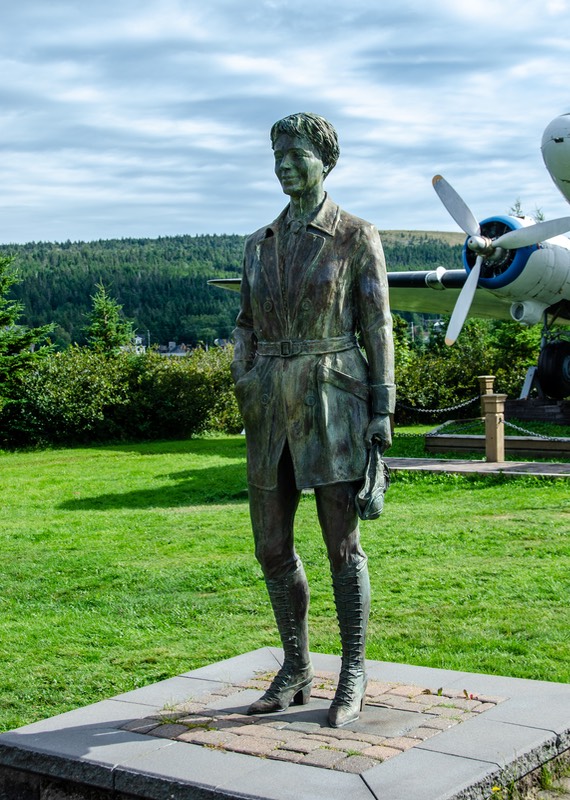
Beautiful, warmer weather was with us as we moved further south in the eastern side of Newfoundland.
Dropping back down a bit, we stopped in Harbor Bay. This is once again a cool spot of Newfoundland history based on the whole North America-to-Europe distance thing. Harbor bay is where Amelia Earhart took off on her record-setting flight in 1936, becoming the first woman to fly solo across the Atlantic Ocean. There is an Amelia Earhart exhibit in the local museum, and also a nice statue of her in a park by the visitor center.
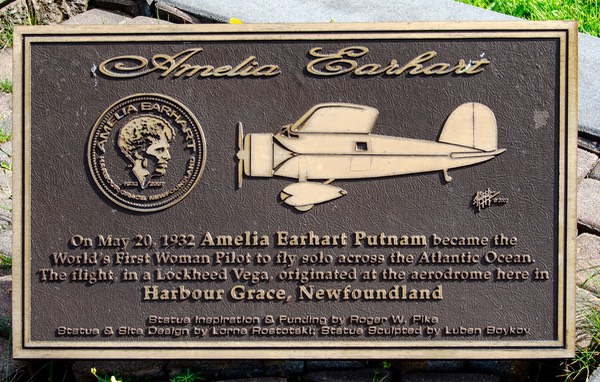
A cool thing happened while we were enjoying that statue. A couple stopped to talk, and told us that the air field that Amelia Earhart had used for her transatlantic flight was only a short, but convoluted, distance away and that we should go take a look — that it was really cool. And they were right. Awesome; Eddie Rickenbacker used that field, too. Just a little grass field, with all that history! We were having a good time.
Suddenly — or so it seemed — we were approaching the capital, St John’s. We had been ambivalent about visiting this year; we were here in 2004 and had spent a lot of time then — it’s a great town to wander in and learn about. Also, we’re really slow to agree to spend time in a large city (even St John’s, which has sort of a miniature San Francisco Bay feel to it, lots of history and plenty of good places to visit), and we were on the verge of Labor Day weekend. In the end we decided to bypass the city for now, and drop way far south on the west side of the Avalon Peninsula to spend a few days down there and then swing back up to hit St John’s after the weekend.
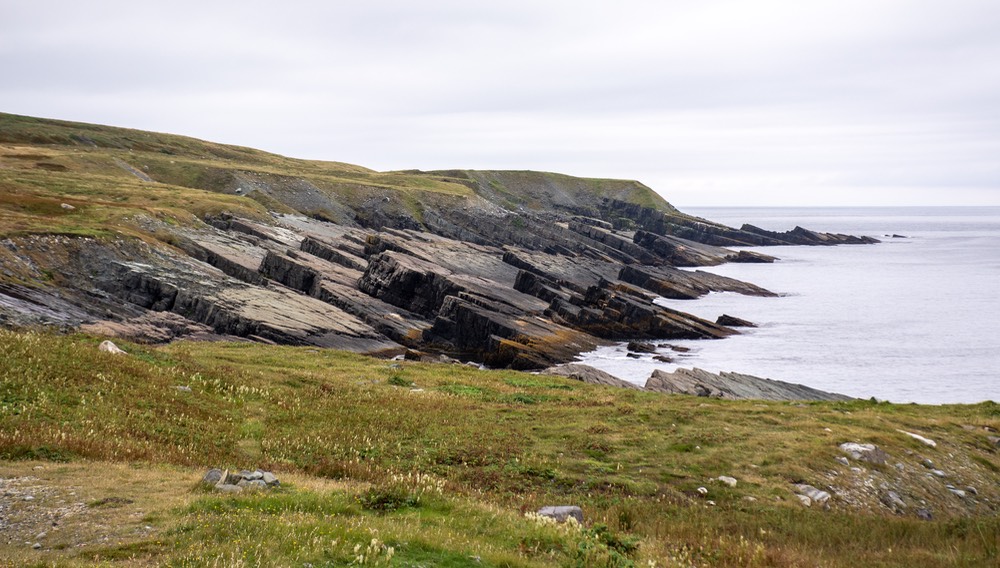
And, damn, it was totally great! We drove down Highway 90, stopping on the edge of the Salmonier Arm of St Mary’s Bay, between St Catherines, Forest Field and New Bridge (for those of you keeping track). There was a small boat launch spot with picnic tables where we could stay; we spent the night watching the rising tide get very close to our tires but only just flirting. Glorious. Nobody around but a few folks out to use the boat launch in the afternoon.
The next day (quite foggy for much of it) we took a great drive on a sometimes rough road around the southern, wild edge of the peninsula, across the moors and along cliffs over the ocean. The moors were lovely, with all the same flowers we’d been seeing all summer, plus a real sense of revisiting the Scottish Highlands
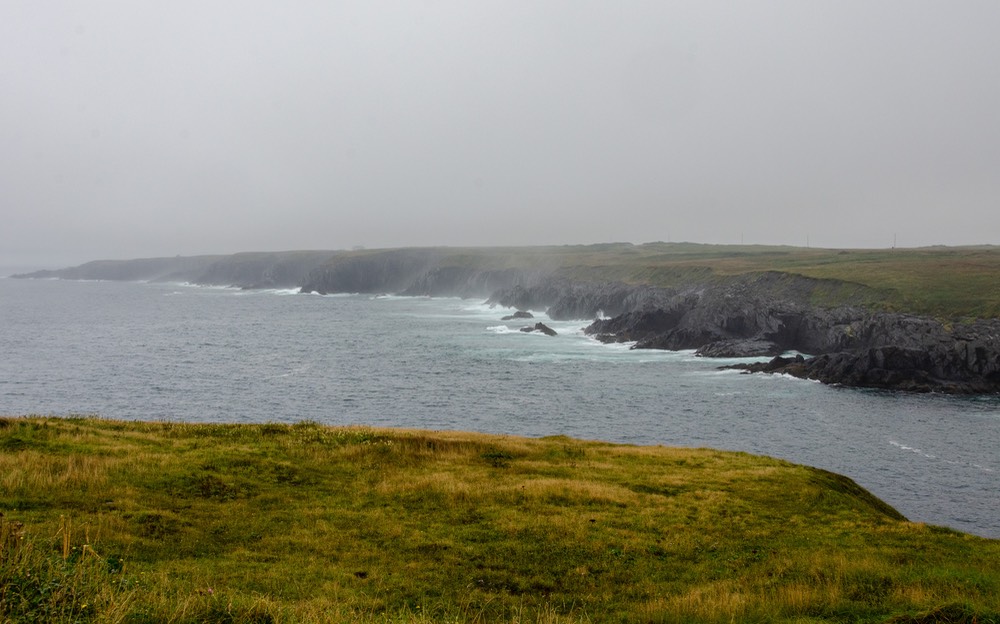
We took a detour out to Cape Race and its lighthouse (with a superb foghorn), then started up the east side of the peninsula, getting us back into the outskirts of St John’s. And there we had the discussion. Ultimately we both decided we’d about had enough of the area and wanted to head further west. We chose to skirt St John’s as much possible and to skip the couple of things we thought we might do there.
We’ve known for some time, and have mentioned it to you in these pages, but it just seems that our tolerance for crowds and traffic has been reduced over the years just as our love of open spaces has increased. Neither good nor bad, it just is. Anyone coming to Newfoundland for the first time should absolutely visit St John’s to see its lovely compact deep water harbor, visit the Geology center and Signal Hill and everything else any capital city with a fascinating history has to offer. Oh — and be sure to take photos of the statues of the Newfoundland and Labrador dogs!
We found, and none of this is a surprise, that the eastern side of Newfoundland is much different from out in the west. More people, bigger/newer/nicer housing, more development, and — lawns everywhere. Sound a lot like the American east? We thought so, too. Out of Newfoundland’s population of about 575,000 folks, about 40% live in and around St John’s so you get the picture.
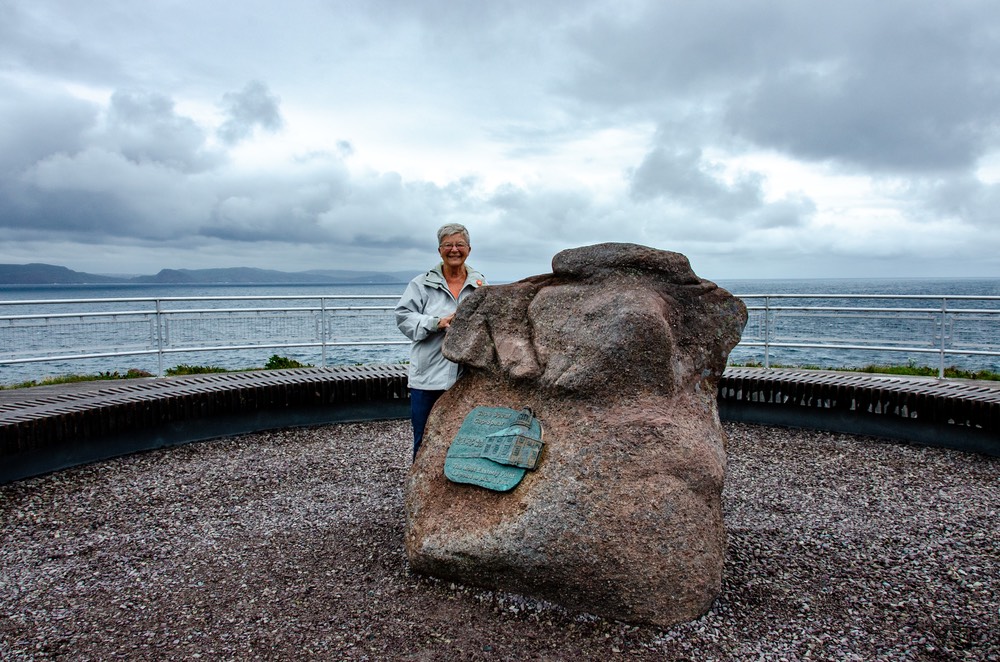
What we didn’t want to miss while in the area was a return visit to Cape Spear, which is the easternmost point in North America and a very pretty and interesting spot.
We took a tiny, winding road out to a very wet Cape Spear and its lighthouse. Well worth taking the trip. The cape has a wonderful history, and is so evocative. St John’s was an enormously important harbor for the convoys supporting the allied effort in Europe during WWII, and Cape Spear was a major military facility tasked with helping to protect St John’s.
One of the most interesting things about Cape Spear is that from there you can see the entire coastline running
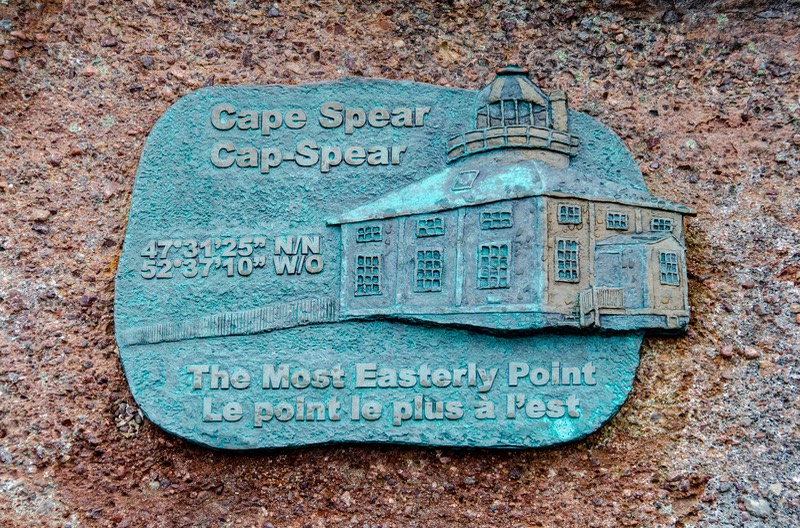
north and south from St John’s and appreciate how well protected the tiny opening to the harbor there is. Really quite amazing. If you didn’t know it was there, you would never believe that there even is a harbor entrance there, let alone an invisible city of over 200,000 people. We spent quite awhile, walking around and seeing the views, enjoying the beauty of the location, reading lots about the history of the area, and having a good time despite a light drizzle. And Rick got to retake a photo of Kathy standing by the sign marking the easternmost point. New sign; same Kathy; cool photo.
Then, after lunch and some groceries, we made a left turn and started back west. The first Km highway sign we saw was 20, a week or so later we passed Km 850 as we neared Port Aux Basque. We’d made no reservations yet for the ferry to Nova Scotia, but knew it was getting to be time. The party’s just about over for us in Newfoundland.
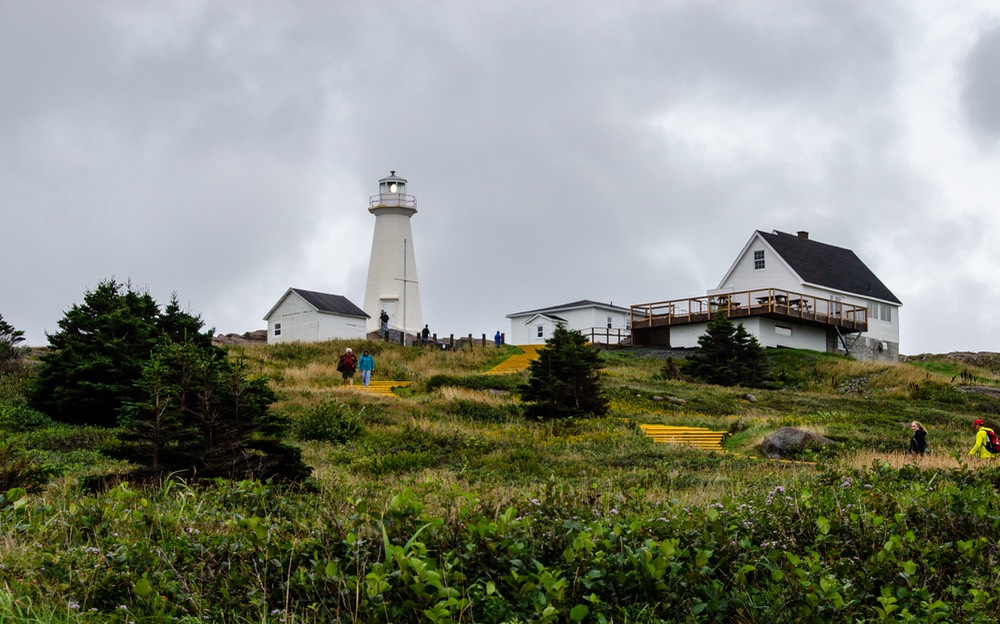
On the trip back into the west we covered some of the same mid-country ground as before, but not all of it. Coming east we’d gone up and down various peninsulas and skipped some of the TCH; we were able to see these areas now on the return trip. At one point along the highway we spotted a truck beside the road with BLUEBERRIES on a nice little sign. Screech. They were offering two enormous picking baskets for $25, but of course we had nowhere to put, let alone eat, that many. So Kathy negotiated a smaller basket for $10 and everybody was happy. They are small but splendid, and they even will freeze. Yeah!
Some of you who’ve been to Newfoundland may be asking about dropping down to Cape St Mary’s Ecological Reserve, with its tremendous bird colonies. We’d been there in 2004 and they were at the top of our list for this year as well. Sadly, we were getting reports from the locals that there were many birds dying from Avian flu right now, and so we decided to skip it for this year. Perhaps we’ll get another chance.
Once we got back to Deer Lake, we were into new territory for this year’s journey and were happy to head south into the lovely Humber Valley, following the Lake Known as Deer. It was sunny now, after some heavy fog earlier this morning. This is a well known area and really is pretty special; it’s very beautiful. We’ve just made a reservation to catch the ferry in a few days, and are enjoying the last of our time in NFL. A very special stop was made at Lark’s Cove and nearby Bottle Cove, out at the western edge of the bay that Corner Brook calls its own.
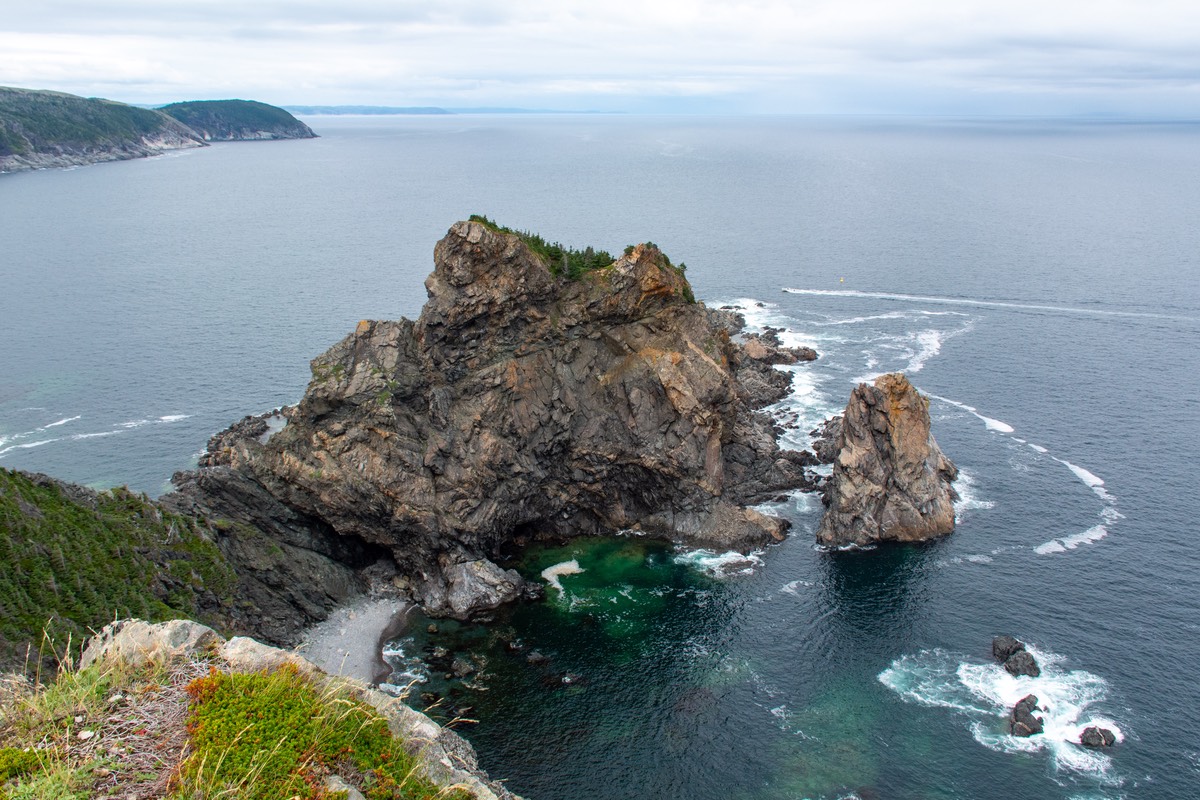
Lark’s Cove and Bottle Cove are stupendous and remarkable. And right next to each other. They are the absolute beautiful best!!! Gorgeous, classic beauty. Sadly we have two unfortunate items to report. One is that the light was completely wrong for us to be able to get good photos of the two lovely coves.
The other is that in recent years No Overnight Parking signs have gone up in the area so we could no longer spend any time enjoying the beauty of the scene in the evenings. This is a growing problem for travelers such as ourselves due to two main causes — we believe. The first is that there are simply more people adopting this style of travel; using smaller RVs and becoming more self sufficient and less dependent on formal campgrounds. The second reason is that the very Apps that make it easy for us to find overnight spots also serve to draw many more campers to the same out-of-the-way places, and this creates an understandable friction with local residents. Each of these reasons are both good news, and bad news. We applaud the growth of the independent travel we love and the Apps that have made it so much easier for all of us, but these developments do not come without a significant downside.
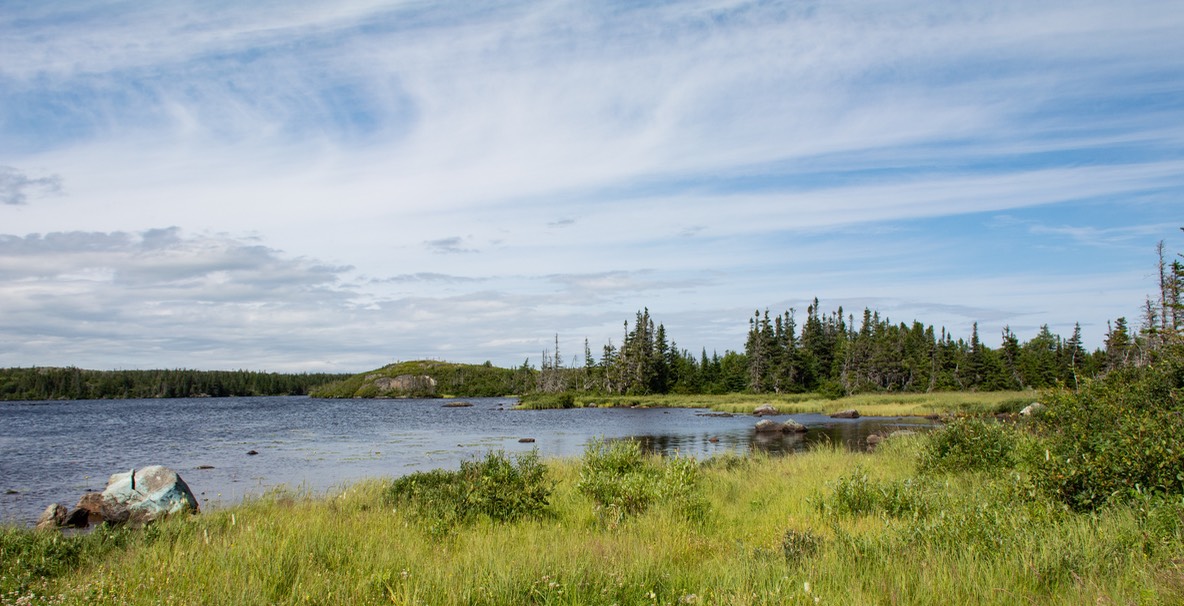
And so we have now come full circle. We entered Newfoundland north of here and enjoyed visiting the Gros Morne mountains. Then we spent a month traveling all the way east to St John’s and then back across the province to arrive here — standing in Lark’s Cove and looking north, where we could see the south side of the Gros Morne mountains, right in front of us. It was really a revelation. We could easily see to the point where Trout River was located and where we’d enjoyed such good ice cream a few weeks back. The GPS told us it was only 45 kms as the crow flies, but unfortunately nearly 200 kms as La Tortuga drives, so no ice cream for us this time.
We have just a few days left now to get to our ferry; then we’re off to Cape Breton to hear some wonderful music and see another of our favorite places. But we do have a few final thoughts about our time here.
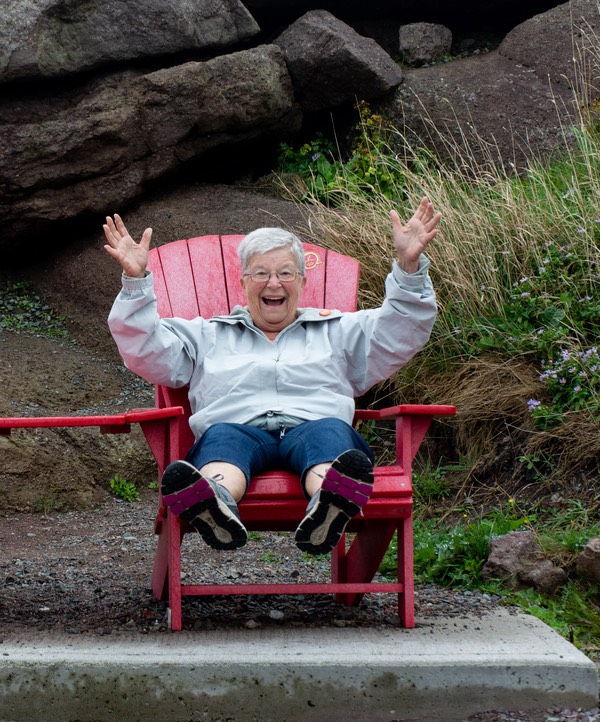
When we arrived in NFL last month, one of the things on our minds was that we wanted to see how much things might have changed in the 18 years between visits. We’re delighted to say that there doesn’t seem to be that much difference. Yes, there are certainly new houses appearing in many of the cutest villages; but we seldom have seen anything you could call a housing development. Just individual homes scattered about; we felt that too many of them were larger than the older homes they were being built near, and stood out more than they might have, but who are we to say. Overall, the change seems to be fairly minimal and we are pleased to be able to say that.
We looked it up and found that the population of the island has only increased from around 520,000 in 2004 to around 575,000 now, which is only about 10% growth over eighteen years; a number that fits in with our own observations about not seeing huge change. One thing that does stand out for us as a big difference between 2004 and today is the ferry schedule. Back in ’04, as we recall, after Labor Day the PAB ferry ran only about once a week — now it maintains a schedule of two ferries per day! Newfoundland & Labrador may be the least visited of the provinces, but even it has changed in that regard.
We most sincerely hope that our ramblings in this message encourage you to come for a visit. Newfoundland is beautiful and full of huge empty spaces and beautiful things to see, to say nothing of its history, great people, and — don’t forget the cool lighthouses! So get it on your list.
Rick and Kathy and all of us here at Team Tortuga
Ps: One tradition has been continued, whether (weather?) we wanted it to or not. In 2004 we were held up waiting for the ferry for a couple of days due to a passing hurricane, and here we are again doing the same thing. Our eventual crossing date then was 9/21; this time it ’s 9/18. I guess we remain consistent in some things. If we could afford to we’d buy a round for all of you who have ever muttered, ‘These guys never learn”. You know who you are.
Don’t forget to visit our extensive Photo Page for Newfoundland